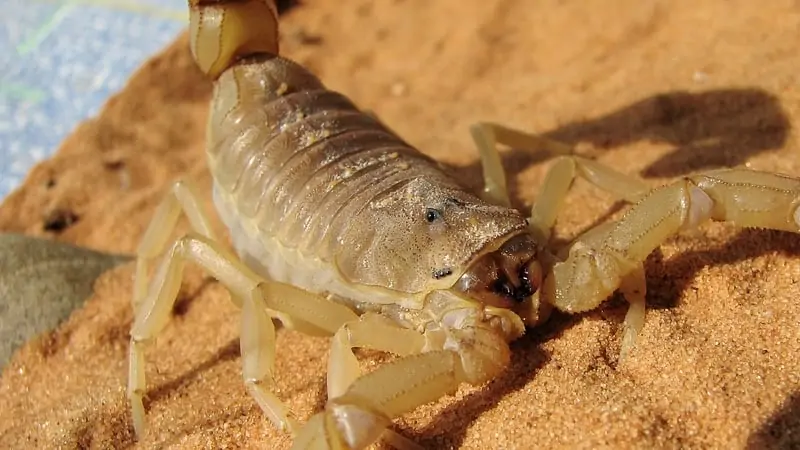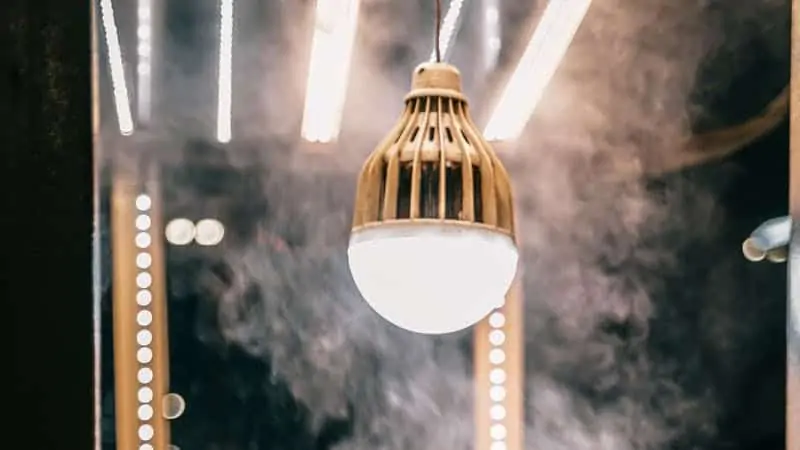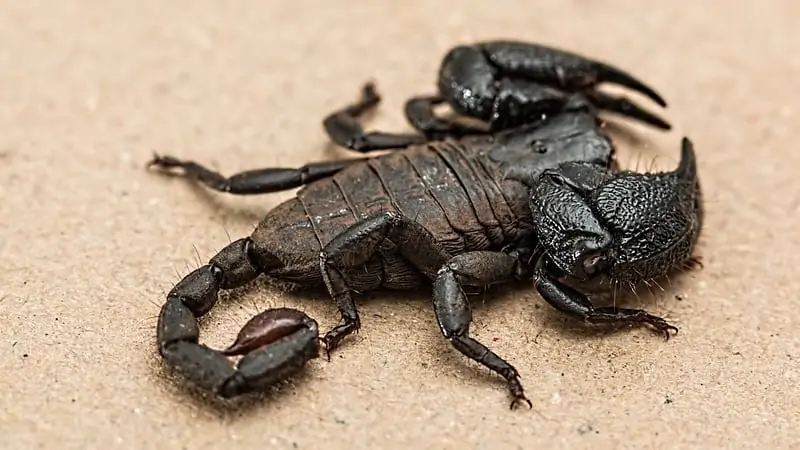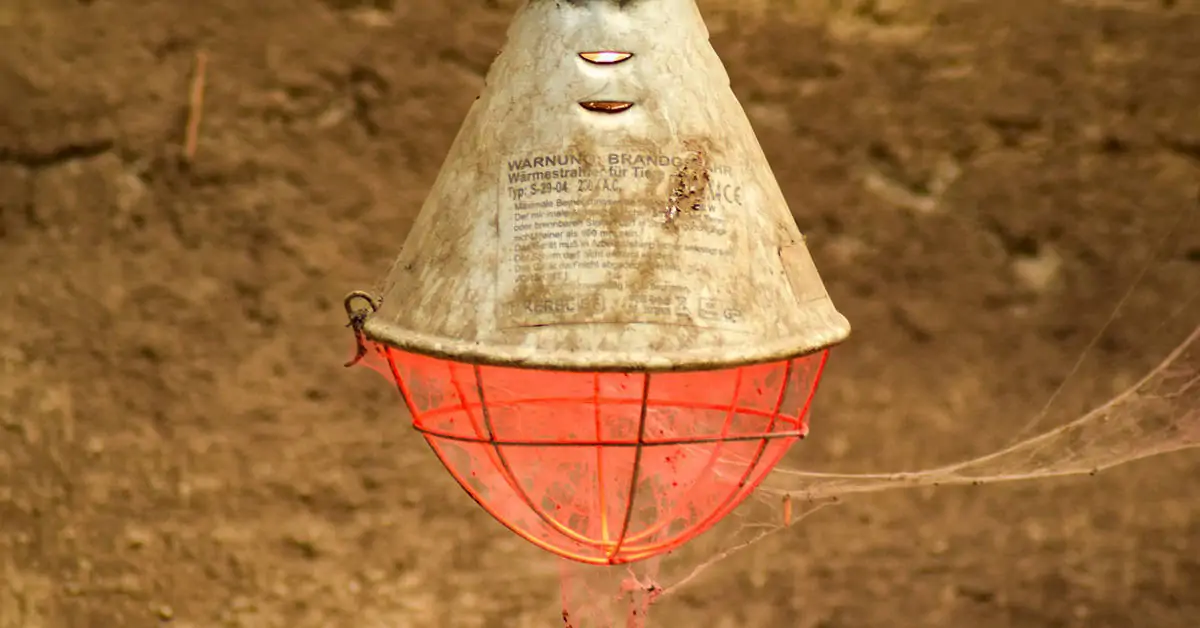Temperature and humidity are crucial considerations when keeping exotic pets, and scorpions are no different. Owning a pet scorpion means you must try to mimic their natural habitat as much as possible. Amongst the temperature modulators, can you use a heat lamp for scorpions?
You can use a heat lamp as a supplementary heat source for scorpions. Heat pads or mats are the primary heat providers in a scorpion enclosure, but they might not be enough. If using multiple heat maps still doesn’t give the required temperature, a heat lamp can help.
This article explores scorpions’ like for heat lamps and whether you can use heat lamps for scorpions. I also discuss the kind of light that scorpions need.
Do Scorpions like Heat Lamps?

Scorpions are nocturnal, and light makes them a little shy. Because they naturally have no positive requirement for light, they are more likely to hide from light all day. However, heat lamps do not solely provide light, and their second function is why you consider them for your scorpion enclosure.
Heat lamps are special incandescent bulbs that work like regular incandescent lamps but create more infrared radiation. You may also know them as infrared heaters, IR bulbs, or infrared lamps.
Their primary application is in the provision of heat, and their design enables them to produce as much heat as possible through infrared radiation.
Because heat lamps are cheap, efficient, and warm quickly, they find a lot of use in applications where the temperature is critical. The infrared radiation creates more radiant heat (warms the area) and gives more warmth than a regular lamp.
The two major types of heat lamps are:
- Frosted or clear lamps provide heat as regular heat lamps.
- Red lamps produce less visible light than frosted lamps. They are ideal for situations where both darkness and heat are essential.
Although some people are against using heat lamps for your scorpion enclosure, it may be necessary to meet the temperature requirements.
Can You Use a Heat Lamp for Scorpions?

You can use heat lamps for scorpions if the situation warrants it. Many people don’t recommend it for heating purposes because scorpions may run away from the light. Regardless, they produce radiant heat, so it will still help regulate the enclosure’s temperature.
Heat pads or heat mats are more popular as heat sources for scorpion enclosures. Scorpions are cold-blooded or ectothermic, meaning they regulate their body temperature based on their immediate environment. To help them do this well, you must set up a temperature gradient in their enclosure.
One end of the enclosure should be warm, and the other should be cool. Your pet scorpion can relax at either end, depending on whether it wants to be cooler or warmer.
Both desert and jungle species of scorpions are most comfortable in environments that stay around 75 to 90 degrees Fahrenheit.
Why Heat Pads or Mats are Inefficient
Even with their popularity, heat pads may be insufficient heat providers. Some reasons for their inefficiency are:
- Heat mats are mainly designed to provide warm floors for reptile enclosures. They only heat the surface to which you attach them, and the materials of your enclosure may be a poor conductor of heat.
Acrylic is a worse conductor of heat than glass, and most of the heat doesn’t get into the terrarium.
- Most people place them at the bottom of the terrarium, which could be dangerous. When scorpions feel too hot, they burrow into the substrate. A burrowing scorpion only goes closer to the heat source if the heat pad is at the bottom.
There are two ways to avoid cooking your scorpion alive by placing a heat mat at the bottom of the tank:
- Place the heat pad or mat at the side of the tank. The scorpion can burrow without the risk of overheating.
- Ideally, the heat pad should only cover approximately one-third of the terrarium’s base. This provides a temperature gradient and allows the scorpion to choose a suitable temperature per time.
If you use a heat lamp as a supplementary heat source, place it directly over the heat pad (at the underside of the tank). To maintain morning and night cycles for the scorpion, turn it off at night and keep it on during the day.
What Kind of Light Do Scorpions Need?

Scorpions do not need light because they are nocturnal animals. Most species can glow in the dark: in the wild, it helps them forage for food while avoiding predators. If you keep your room at a stable temperature and it has enough natural light, you may not need extra light for scorpions.
If you provide light for them, avoid fluorescent lights because they contain some UV, which is not good for scorpions. However, IR or red infrared bulbs are better because scorpions are less sensitive to red light.
You can also get a lamp with a built-in dimmer to help regulate light exposure at night. The bioluminescent nature of scorpions can help you locate them at night.
While putting scorpions under black UV light is not harmful, regular or prolonged exposure is dangerous. The adverse effects of protracted black light exposure include:
- Dehydration
Black lights dry out a scorpion’s exoskeleton faster than it can replenish its fluids. Dehydration causes many problems for scorpions and you should avoid it at all costs.
- Prolonged exposure to black light makes it impossible for a scorpion to molt. The UV waves are usually intense enough to ‘microwave’ their exoskeleton and melt it into their flesh.
- Psychological issues may also arise, causing your scorpion to stop feeding. This effect is like that experience of other species when red bulbs serve as their nighttime heating source.
- Scorpions may also become less responsive to light over time. Many owners who house their pets under black light have said that their scorpions exhibit less response to light. The extended exposure to black light may make them blind, and they won’t run for cover when you shine a light on them.
Remember to maintain a regular day and night cycle for your pet scorpions. Aim for 10 to 12 hours of light during the day, and complete darkness at night.

